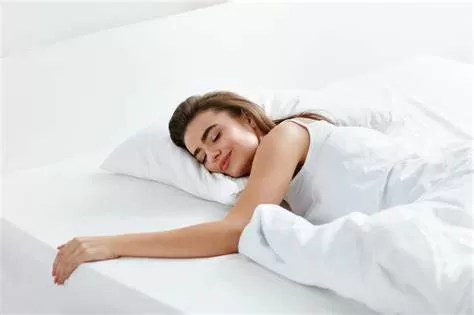
Elena Riboldi, Ph.D., PharmD, published an article in September 2023 about the importance of educating patients under a doctor’s care on what symptoms can equal an obstructive sleep apnea (OSA) diagnosis. Riboldi notes that many patients don’t know to even talk to their doctor because they believe the lack of sleep is possibly caused by stress at work, home, or school. But education is the first step to recognizing the problem.
OSA is dangerous when not diagnosed properly so having a spouse, partner, parent, or roommate to help you identify the problem early is key to treatment. Journaling can help when you wake up to describe your sleep patterns, diet, and exercise, plus any psychological variances that could be affecting healthy sleep.
Riboldi reports that the “diagnosis of sleep apnea in primary care is becoming more feasible with advancements in diagnostic tools and technology. However, it is crucial for primary care physicians to exercise caution in cases in which the clinical presentation is not straightforward or when OSA is associated with comorbidities. Care management and clear boundaries are vital to ensure effective treatment and improve patient outcomes.”
What is OSA?
Obstructive sleep apnea (OSA) is a condition that involves repeated episodes of either partial or complete blockage of the airway during sleep. The body identifies this as a “choking phenomenon,” raising blood pressure, and slowing heart rate. Blood oxygen levels may also drop during an apnea episode.
When the muscles in the back of your throat relax too much, they do not allow for normal breathing. The muscles support your mouth roof (soft palate), the hanging tissue from the soft palate (uvula), the tongue, and the tonsils.
When these muscles are relaxed, the airway narrows as you breathe which lowers the level of oxygen in your blood causing a buildup of carbon dioxide. Your brain is triggered by the impairment in breathing which rouses you from sleep. The snorting, choking, or gasping is correcting the problem with a few deep breaths.
“This pattern can repeat itself five to 30 times or more each hour, all night long. These disruptions impair your ability to reach the desired deep, restful phases of sleep, and you’ll probably feel sleepy during your waking hours.”
STOP-Bang Questionnaire
Developed in 2008, the STOP-Bang questionnaire was intended as a pre-screening tool for the obstructive sleep apnea (OSA) surgical population. However, its popularity grew to include sleep clinics, the general population, and other special populations for those at high risk for sleep apnea.
- Snoring that disturbs your own sleep or a partner, spouse, or roommate.
- Tiredness that specifically worsens in the daytime at work, home, or in your car or commute.
- Observed apnea that has caused choking or gasping for air or pausing in sleep your breaths.
- Pressure, specifically high blood pressure, is an important part of the STOP puzzle to regularly track with your doctor.
BMI, age, neck circumference, and gender (BANG) help determine the probability of OSA when compared to its symptoms (STOP). Studies have shown the Stop-BANG questionnaire’s effectiveness in new populations such as a lower age bracket prone to OSA.
Men vs Women
Men and women vary in how they sleep so talking to a primary care provider is important to understand warning signs beyond STOP-Bang. When it comes to bouts with sleep deprivation, men do have a harder time recovering causing more occurrences of work performance incidents. Although more and more women are working full-time while balancing a family, it is more common for the man to work 40-plus hours a week.
Women require 20 more minutes of sleep than men because of their expansive mental energy depletion; women tend to multitask more frequently using more of their brain during the day. Sleeping helps the brain regenerate, therefore, multitaskers need more focused REM (rapid eye movement).
Another study found that biological sex factors affect the circadian rhythms of men and women. “Men’s clocks tend to run truer to a full 24-hour cycle or longer meaning they may feel less tired in the evening. In women, the internal clock is more likely to be shorter than a full 24-hour cycle, making it more likely that they will awaken earlier, which may also increase their susceptibility to early-waking sleep disturbances like insomnia.”
Talk to your doctor about the STOP-Bang questionnaire if you are under 60 and are experiencing any chronic pain either physical or emotional. These could be contributing factors to a restless sleep that needs a sleep clinic’s intervention to determine the next steps.










